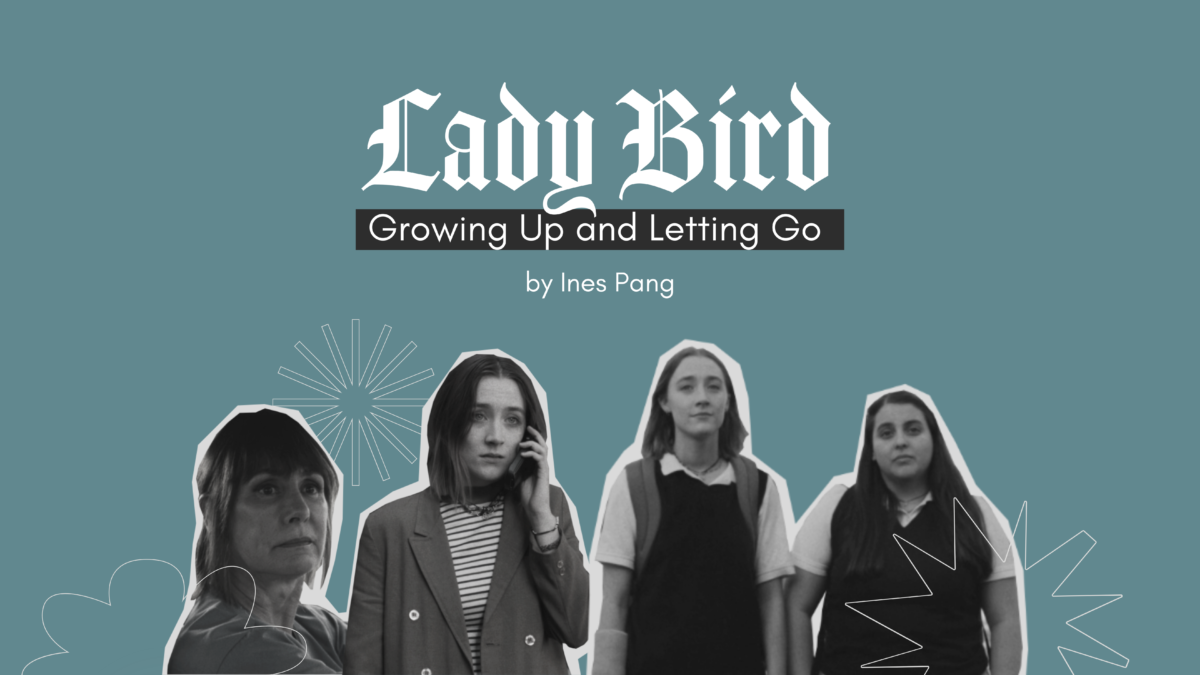Before Lady Bird (Saoirse Ronan) heads off to college, she sits down to a conversation with her Catholic high school principal Sister Sarah-Joan (Lois Smith) that illuminates her unrealised love for her hometown of Sacramento, California. After reading Lady Bird’s college entrance essay, Sister Sarah-Joan remarks that her affection for the city is plain to see in the way she writes about it so intimately and “with such care”. When she shrugs it off and answers that she merely pays attention, her mentor observes, “Don’t you think they are the same thing? Love and attention?”
In a collection of her journal writings titled Gravity and Grace, French philosopher Simone Weil encapsulated the idea of attention as a sacred thing: “Attention is the rarest and purest form of generosity.” She goes on to say, “Attention, taken to its highest degree, is the same thing as prayer. It presupposes faith and love.”
Lady Bird thinks she wants nothing more than to escape Sacramento, but the contemplative, attentive way she writes about it unveils her profound care and attachment. As such, the faithful act of creating something also embodies an act of love in itself.
It is this idea of attention as love that Greta Gerwig draws inspiration from for her writer-director feature debut Lady Bird (2017). She tells the coming-of-age story of 17-year-old Christine “Lady Bird” McPherson in her senior year of Catholic high school, who dreams of escaping her seemingly lacklustre and uninspiring life in Sacramento to a liberal arts college on the sophisticated East Coast, “where culture is”. The movie takes us through how she navigates love, friendship, ambition, loss, and—most centrally—her turbulent relationship with her mother, as she sets out to blaze her own trail in life.
Christine defiantly gave herself the name “Lady Bird” as a way to establish her own identity, to feel free from the trappings of her seemingly small life. She longs for change, and in search of that, she makes new friends, falls in love, and tries different, novel things. Like many teenagers, she is chronically self-absorbed, but—through fleeting glimpses—the film also allows us to be privy to the adolescent struggles with change and self-discovery faced by even the peripheral characters who cross paths with Lady Bird, letting us see what she is sometimes too selfish to notice.
The movie traverses the familiar grounds explored by countless coming-of-age stories, but what makes Lady Bird so special lies not in its setting but in how the story is told. Lady Bird conveys the simple yet impactful message that by attentively turning our mind to the world around us, we can learn to love on an even deeper level.
Lady Bird tells the story from two perspectives: Lady Bird and her mother, Marion (Laurie Metcalf), who are always at odds with each other. Marion’s anxieties about their family’s troubled financial situation and frustration with Lady Bird’s endless demands—especially her insistence on going out of state for college—cause her to lash out at her daughter. Meanwhile, Lady Bird is constantly infuriated by her mother’s passive-aggressiveness and controlling attitude. However, it is clear that they love each other more than they are willing to express, through their quiet attendance to each other’s needs.
By exploring not just the emotional world of the teenage protagonist but also that of her mother, it helps the viewer put things into perspective. The relationship between mother and daughter also contrasts the experiences of ambition and loss, as well as underscores the dichotomy between where Lady Bird is and where she wants to be. With Lady Bird, we see what could be. She has scribbled a line from Anna Karenina on her bedroom wall that reads, “Boredom: The Desire for Desires.” Embodying a young person teetering on the cusp of adulthood, she looks to her hopes and dreams for the future, yearning for more out of life. On the other hand, Marion seems to represent what is. She dashes her daughter’s dreams with the sobering reality that their family can barely afford state tuition as it is (highlighting Lady Bird’s appalling self-involvement in light of her father’s depression and unemployment) and her poor performance in school. She reminds Lady Bird that the future never turns out quite the way we hope. In the montage where the two visit open houses together, Marion appears wistful, as though mourning her life for what could have been, while Lady Bird is filled with promises of what the future will bring.
When working with her cinematographer Sam Levy, Greta Gerwig told him she wanted to give the movie the visual quality of a memory. “The way time rushes forward is a theme of the film, one scene tumbling into the next. We can never hold onto it,” Gerwig says. “It is something beautiful that you never appreciated and ends just as you come to understand it… There is a certain vividness in worlds that are coming to an end.”As the film draws to a close, we see Lady Bird as a college student, finally in New York, but she is unhappy. She finds herself drawn towards a church, the one place that still feels familiar to her. Only in losing what she loved, that she learned to appreciate what she had. In the end, Lady Bird underscores the message of acceptance: Sometimes growing up means having to let go of the paths we didn’t take, and—by paying attention—learning to love life for all that it holds.


